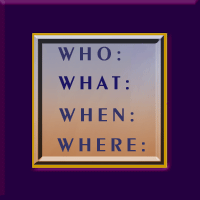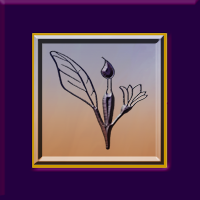TALES FROM A NEWBIE BLOGGER
What can a newbie blogger tell you? Are you expanding your practice of the Art & Science of Writing? Perhaps you’re thinking of beginning your own blog. Recently I’ve received requests for tips on setting up a blog. Before launching into how I’ve created and maintain this site, I must clarify that I’m not a techie and do not possess the mental acumen to write the code required to build any website from scratch.
If you are a professional writer, having a blog can be a key feature of your authoring strategies. Regardless of whether you are an author, you may be thinking your greatest concern is what you’ll write about. I suggest that if you feel the need to have a blog, the contents of it are already floating in your mind. The quality of your output will, of course, depend on your skill set.
Setting up a blog demands many things beyond the writing of text. Therefore, today I’ll focus on the mechanics of creating a blog. The first and recurring requirement for doing this is having the patience to accomplish the task. Next on my list of requirements, is my favorite pairing of ingredients in most things I do: Art and Science. I place the issue of art at the fore, because without an artist’s inspiration, you’re less likely to create an appealing space that will capture and keep your readers’ attention. Please note that I’m not suggesting that all of us are worthy of assuming the title of artist. However, we can reach for the artist’s balance of mind and spirit in exploring color, shape, and overall composition—regardless of the style in which we create our memorable statements.
As to the element of science, whether or not you are a techie, there are sources to help you determine the appropriate building blocks for bringing your vision to fruition. Your research can begin with querying your favorite search engines. This will provide the technical terminology you need to be able to ask intelligent questions during online searches and efficient analysis of tech manuals.
Even if you decide you’re not qualified to build a blog site, this preparation will help you communicate effectively with specialists in building websites. For by the time you’re ready to launch the building of a blog, you should have established a connection with a reliable techie or tech support company—online, if not in person.
Parallel to my June 2015 blog on Media Relations, I suggest you make the most of every contact you can develop. How do you go about making friends with techies? If you are able to move from online communication to meeting in person, take a page from your personal life. Coffee, lunch, or drinks (not necessarily alcoholic) moves you into a social atmosphere in which you can explore commonalities and a potential working relationship with the person. Regardless of how you connect, when it’s time to formalize a professional relationship, be specific about your needs and desires. Ask the individual or company to clarify the services they will be performing for you and the fees you will pay. Depending on the parameters of the work involved, a contract may be called for. If that is so, you may want to consult colleagues as well as an attorney prior to signing a contract or making any payment.
Personally, although I’ve designed my own websites several times, I am now using website and blog templates provided by the company that hosts my online presence. Regardless of the tools used, the design of a website or blog is a major commitment of energy and time. This is especially true since search engines now expect a level of optimization that meets the standards of the latest electronic devices—and those standards never stop changing. Fortunately, an international company providing templates should ensure that the products they offer their clients are state of the art. They may also help you with a program of search engine optimization.
Before you feel I have failed to help you in your hour of need, let me tell you how I’ve modified the template for this blog. Fortunately the templates provided by such a company usually offer varied features and levels of adaptability. There are some limitations I’ve had to accept, since I chose to accept the parameters of a free template. For example, while current posts offer my bio at the bottom, it does not appear in posts that have been archived. Also, without utilizing an add-on menu, I cannot customize items in the contents list to the left of the page—nor can I modify their appearance. And, although I’ve can choose the text colors of my posts, I am unable to do so for their titles.
Design features in the blog were drawn from my website. Harmonious in appearance, both feature:
~ My artwork includes a banner with my logo at the top of each page
~ Ivory colored backgrounds
~ Dark blue and plum colored fonts
~ Favicons with my logo to the left of the URLs
Color is a very important element in any visual project. While there are many blues and golds to choose from, I selected colors for my logo that print well in gray scale. The blue is deep enough to print as nearly black when printed in gray scale. Conversely, the gold I work with is light enough that it prints as a light gray, allowing the lettering in the blue to be readable. I should point out that the colors I tend to use are close to, but not exactly web safe colors. This means that I provide subtleties that most visitors to my website or blog will view; but should a visitor’s monitor and software limit the range of visible colors, their default settings will be close to my design.
The operation and maintenance for a website or blog may rest on trial and error…at least initially. When I first uploaded posts, I was not aware of choices I could make in visibility. There were also instances where I failed to notice a typo or changed my mind about the wording of a section of text. Eventually I recognized the value of choosing the preview option after inputting text. This allows you to make sure that both the content and its appearance are pleasing. As a final test, I read the text out loud, prior to hitting the publish button.
Determining the topics I explore in posts is purely personal and often a spur-of-the-moment decision. In my weekly authors’ salon, areas of concern and new discoveries arise as we share materials we are reading and writing. My commentary is also motivated by edits of text that reveal recurring flaws in my own work. This particular post is in response to repeated questions from readers of this blog and visitors to my website.
When launching this blog, I was reviewing the first three books in a trilogy of murder mysteries set in Honolulu, where I lived for over two decades. With the launch of Prospect For Murder, I am moving forward with seeking publication of the next two books in the Natalie Seachrist Hawaiian Mystery Series. I’m sure that my personal issues with writing and editing will continue to encourage me to examine questions of authorship that may be occurring in your own work.
Finally, I want to thank a couple of readers who sent suggestions for improving the coding used within this blog, and for heightening its search engine optimization. I’m just beginning to act upon your welcome response by changing the formatting of images for some online locales from JPEGs or GIFS to PNGs…
Wishing you the best in your creative endeavors,
Jeanne Burrows-Johnson, author, consultant, and motivational speaker
To learn more about the award-winning Natalie Seachrist Hawaiian Mysteries, including Murders of Conveyance [Winner, Fiction Adventure-Drama, 2019 New Mexico-Arizona Book Awards] and other projects, please drop in at my author’s website JeanneBurrows-Johnson.com. You’ll even find Island Recipes that might inspire your culinary creativity.
For more ideas to strengthen your Wordpower© and branding, please visit: Imaginings Wordpower and Design Consultation.
Follow Me On:
Amazon, Arizona Authors Association, Apple Books,
Audible, Authors Den, Barnes and Noble, Blogarama, Book Bub,
Cozy Mysteries-Unlimited, Facebook, Good Reads, Hometown Reads
Book sellers may contact book distributors such as:
Baker & Taylor, Follett, IPG, Ingram, Mackin, Midpoint, TitleWave




